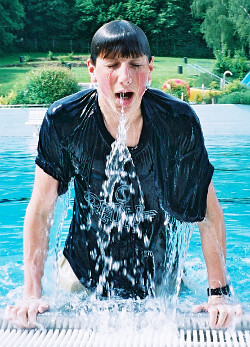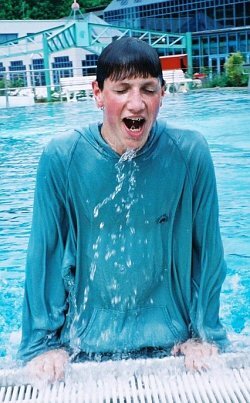Prepare for Open Water
Whether you are a novice swimmer who would like the confidence to take a dip outdoors, or a competent pool swimmer who has already experienced the thrill of open water swimmimg, the pool is a great place to improve your skills and test your gear.
This training is intended for intermediate swimmers. If you can’t go to the pool 3 times a week, just go as much as you can and keep the plan as it is session after session. Follow it through and see your swimming skills get better.
Getting away from following the black line at the bottom of the pool can reinvigorate your swimming. Prepare for the transition to your local lake, reservoir, or ocean, with these training and safety tips.
For swimmers who spend most of their training in the controlled environment of a pool, adjusting to the unpredictable open water can be a challenge.
Before you hit the open water, incorporate specific activities into your training to make the transition easier and safer.
Wading is a good practice to build up lower body strength.
Walk in chest deep water several widths of the pool.
keep your arms in the water to control resistance.
Footballers use this technique to stay fit.
Close your eyes. Swim 8 to 10 strokes in the pool with your eyes closed, then look above the water. This will help you learn to swim straight without using the bottom of the pool as a guide.
Be Efficient. Make it a goal to lower your stroke count per lap to swim more efficiently. Try a workshop or lessons for some new perspective. Wear your open water swim clothes in the pool to get used to their additional drag and weight.
Swim like a dolphin. Practice short dolphin dips from a standing position once in the shallow water. Push forward off the bottom in a series of short dives to propel yourself through shallow water. This way you learn to get in and out of open water more quickly than running through the water. Never dive in from the side of the pool.
Sight-breathing in the pool will help train the muscles you need to lift your head. Lift your head up to look forward in rhythm with your breathing. Look up every eight strokes, eyeing a target past the end of the lane; a window, deck chair or a lifeguard will do. Gradually work up to more strokes between sight-checks with regular practice.
Fartlek, or speed play, is an excellent way to mimic what really happens during an open water swim. Whether you need to swim around a slower swimmer or pick up the pace to draft another person or group, it is easy to incorporate this into your regular training without adding time.
For example, during your long swim sessions, pick up the pace for short bursts, anywhere from 25 to 100 meters, then settle back into your planned session pace. For the best results, start when you're away from the wall to simulate being in open water as much as possible.
It's also a good idea to occasionally stop during one of these repeats,
just like you might do when enjoying the scenery outdoors.
This way, you can practice a deep water start and speed play at the same time.
Most outdoor swimmers achieve the longer distances more easily.
When you swim outdoors, consider the key differences between pool and open water swimming.
Main factors that influence your open water distance are:
- Temperature
- Weather
- Navigation
- Buoyancy
- Clothing
Try out a brand-new wetsuit in the pool before using it in open water.
Even with a wetsuit you already own, wear it for a few pool practices before you swim in open water.
The pool provides a safe and comfortable environment to adjust for the way the wetsuit changes your feel for the water and body position.
However, check with the manufacturer first to make sure the chemicals in the pool won't deteriorate the wetsuit material.
Reader Comments
Swim Training Tip
by Robert, Toronto, CanadaIn our lifesaving team we practice all swimming strokes fully clothed. This didn't convince me at first, but the difference it makes is remarkable, especially for our competition swimmers and strength training. Their results improve much faster now.
Hence our team coach recommends that we wear clothes for all training sessions.
He says that a bad swim stroke can go unnoticed when wearing just swimwear.
But when swimming in clothes it makes a lot more difference and can be noticed.
Anyway, swimsuits are for wimps.
Fitness Swim Training
by Andy, Brisbane, AustraliaLast summer the local pool ran fitness swimming sessions with strength training. This caught my attention as I wanted to shape up. They asked to bring T-shirt, long pants, and a hoodie that can get wet.
The training was very intense. We had to swim fully clothed the whole time, alternating endurance lengths with heavy push-ups. Over the summer I build up good muscles and fitness level. Now I always swim fully clothed to stay fit.

